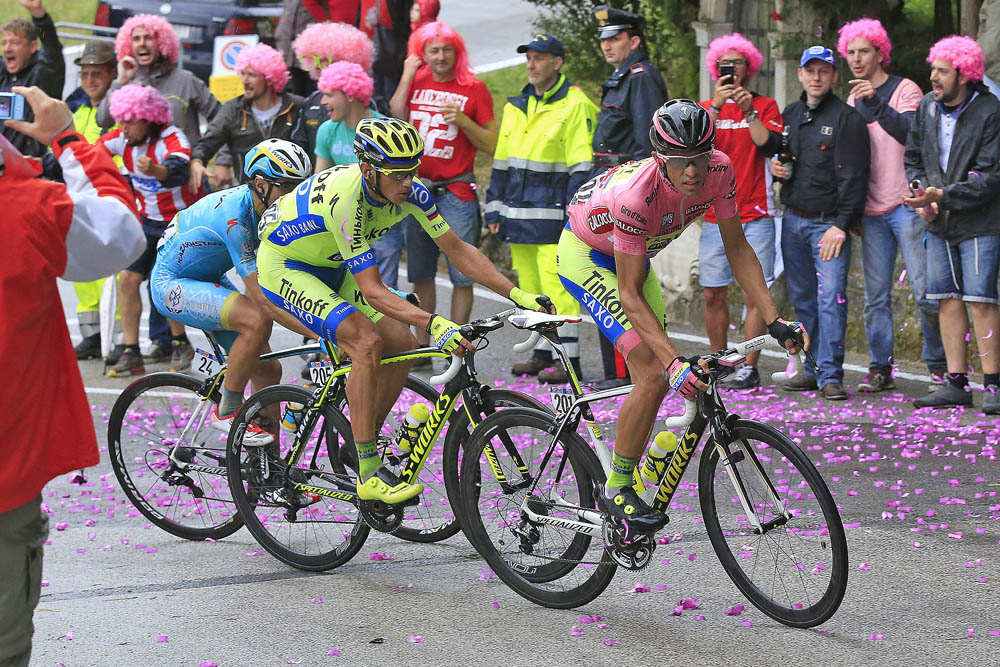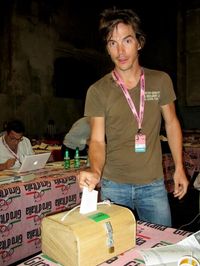Shorter stages guarantee better racing, says Giro d'Italia race director
Mauro Vegni says he'd like to see more short stages make-up the Italian Grand Tour, so there is better opportunity for more entertainment

Alberto Contador on stage twelve of the 2015 Tour of Italy

Giro d'Italia director, Mauro Vegni says he'd prefer shorter stages for the Grand Tour like the ones in the early days of last month's race, as they would make for more exciting racing, but concedes that it would be hard to put into practice.
The 2015 Giro featured a few short stages in the opening week that provoked an early classification fight before the riders reached the famous Alpine passes. The Tour de France uses a similar formula this year, as well.
"If it was all up to me, I'd always like to have a Giro route with short stages, which guarantees a show," Vegni told La Gazzetta dello Sport newspaper. "But Italy is long. It's not easy to follow this wish to the letter."
The Giro's 19 road stages averaged 180.1km long. The first week had stages running 136, 150 and 152km. The 150km medium-mountain stage four to La Spezia offered as much as an overall battle as some of the high-mountain stages. It was the same for the 153km 11th stage to Imola or the relatively long 170km 18th stage to Verbania.
The stages were significantly shorter than the tappone stages of 200 to 264 kilometres sprinkled through the three weeks, but required attention from start to finish.
>>> Five reasons why the 2015 Giro d’Italia was great
In the stage to La Spezia, team Tinkoff-Saxo with eventual overall winner Alberto Contador put Roman Kreuziger in an escape and forced Astana with Fabio Aru to chase. The action blew away some contenders like Ryder Hesjedal (Cannondale-Garmin) and tired out many others.
The latest race content, interviews, features, reviews and expert buying guides, direct to your inbox!
"If you want the lads to race, then you make it short and the guys can go on the break. It forces the others to do something," Sky's principal, David Brailsford explained at the Giro. "It creates scenarios that you won't get in a 240km stage."
The Giro d'Italia this year did not include famous high-mountain finishes to places like Stelvio or Tre Cime di Lavaredo. Vegni instead included mountain stages where the key climb preceded a relatively soft finish, like the climb over Mortirolo leading to Aprica or the Colle delle Finestre before Sestriere. In both cases, the stages produced early battles on the preceding climbs.
"We'll return to those 2000-plus metre finishes, but I didn't mind those lower finish climbs," Vegni said.
"I'm happy with this Giro, it was played out from the first to the last day, never taking anything for granted. Just have a look at what happened on the Colle delle Finestre or in the final in Milan. There were never the classic transition stages or transfer stages. The riders were active every day."
In comparison, the Tour de France's stages this July 4 to 26 average 174.7 kilometres, just shorter than the Giro's stages. The Tour also includes a couple of 'classic' stages in the first week, one finishing on the Mur de Huy that the Flèche Wallonne uses each year and the Paris-Roubaix's cobbles in the stage to Cambrai.
Vegni said that he and organiser RCS Sport is already planning the 2016 route, which they will announce at the end of September.
Show us your scars with Bernard Hinault
Gregor Brown is an experienced cycling journalist, based in Florence, Italy. He has covered races all over the world for over a decade - following the Giro, Tour de France, and every major race since 2006. His love of cycling began with freestyle and BMX, before the 1998 Tour de France led him to a deep appreciation of the road racing season.
